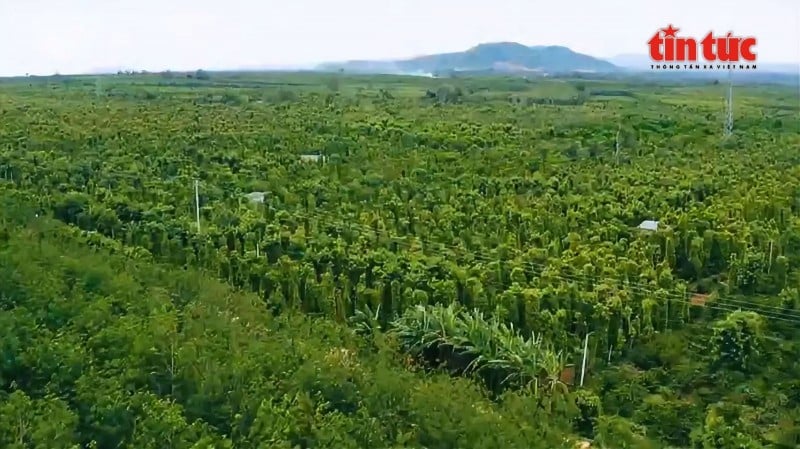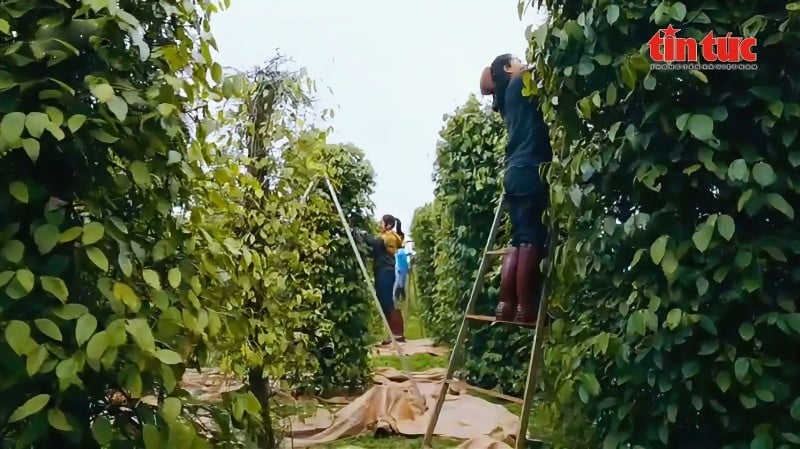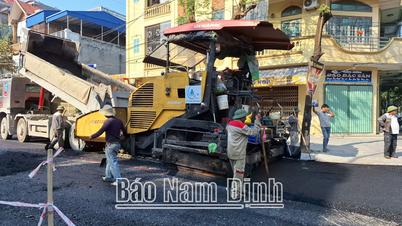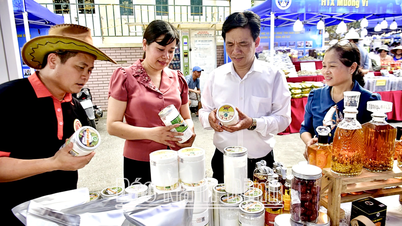 |
| Vietnam pepper closed the first quarter of 2025 with joy mixed with worry. |
According to the latest report from the Vietnam Pepper and Spice Association (VPSA), in the first 3 months of the year, Vietnam exported nearly 48,000 tons of pepper, down 16.1% in volume, but up 38.6% in value, reaching more than 326 million USD. Of which, white pepper - the high-end segment, accounts for nearly 20% and is popular in demanding markets such as Germany, the United States, and China.
Notably, exports to China recorded an increase of nearly 88%, reflecting signs of recovery from this market, although still affected by border control policies. Meanwhile, domestic pepper prices jumped to VND157,000/kg in early April, up more than 73% over the same period. The average export price also reached a record: USD6,695/ton of black pepper and USD8,601/ton of white pepper.
However, the prolonged drought in the Central Highlands and the Southeast is directly affecting pepper productivity. Despite high prices, farmers have not yet pushed up sales because they have stable income from coffee and durian. The lack of irrigation water and poor flower bud differentiation could be detrimental to the next crop.
According to VPSA, although the pepper market is improving, the trend of replanting pepper trees in Vietnam is still slowing down due to limited land and farmers switching to other crops with higher profits. Meanwhile, the US market - the leading destination - is still unstable due to the 10% import tax policy awaiting adjustment.
 |
| Vietnam pepper closed the first quarter of 2025 with joy mixed with worry. |
On the other hand, reduced transportation costs and rising USD exchange rates are helping businesses reduce input pressure. However, many long-term orders are still on hold as parties wait for clearer developments in international trade policies.
Globally, the International Pepper Community (IPC) forecasts that world production in 2025 may decrease by 6.1%, while consumer demand remains on an upward trend. Black pepper prices in major exporting countries have increased compared to the same period, bringing advantages to producers but creating additional cost pressure for importers and processors.
In the US market, imports in February 2025 fell sharply by 33.3% compared to the previous month, although the first two months of the year still increased by 5.3%. Vietnam's market share in the US decreased by nearly 19%, while Indonesia recorded an impressive increase of more than 230%.
 |
| Vietnam's pepper industry needs to accompany farmers and businesses. (Illustration photo) |
Europe continues to be a region with high food safety requirements. In the first quarter alone, there were 15 alerts on spices, of which nearly half involved chili peppers. This is a warning to the export industry to invest seriously in traceability and quality control.
Some countries have seen notable fluctuations: Brazil increased production to about 90,000 tons, boosting exports to Vietnam and the EU thanks to Salmonella treatment technology; Indonesia is expected to reduce production by 8.7% but pepper prices remain very high thanks to low inventories and stable demand.
In the context of a volatile global market, VPSA recommends that Vietnamese businesses proactively expand export markets, diversify supply sources, invest in product quality and standardize traceability processes. Close coordination between growers - businesses - associations will be the foundation for the Vietnamese pepper industry to overcome difficulties and maintain its position on the world spice map.
According to Tin Tuc Newspaper
https://baotintuc.vn/thi-truong-tien-te/kim-ngach-ho-tieu-quy-i2025-tang-manh-gia-xuat-khau-dat-ky-luc-20250417212454890.htm
Source: https://thoidai.com.vn/kim-ngach-ho-tieu-quy-i2025-tang-manh-gia-xuat-khau-dat-ky-luc-212775.html




![[Photo] President Luong Cuong awarded the title "Heroic City" to Hai Phong city](https://vphoto.vietnam.vn/thumb/1200x675/vietnam/resource/IMAGE/2025/5/13/d1921aa358994c0f97435a490b3d5065)
![[Photo] Prime Minister Pham Minh Chinh receives Ambassador of the French Republic to Vietnam Olivier Brochet](https://vphoto.vietnam.vn/thumb/1200x675/vietnam/resource/IMAGE/2025/5/13/f5441496fa4a456abf47c8c747d2fe92)

![[Photo] Many people in Hanoi welcome Buddha's relics to Quan Su Pagoda](https://vphoto.vietnam.vn/thumb/1200x675/vietnam/resource/IMAGE/2025/5/13/3e93a7303e1d4d98b6a65e64be57e870)






















































































Comment (0)